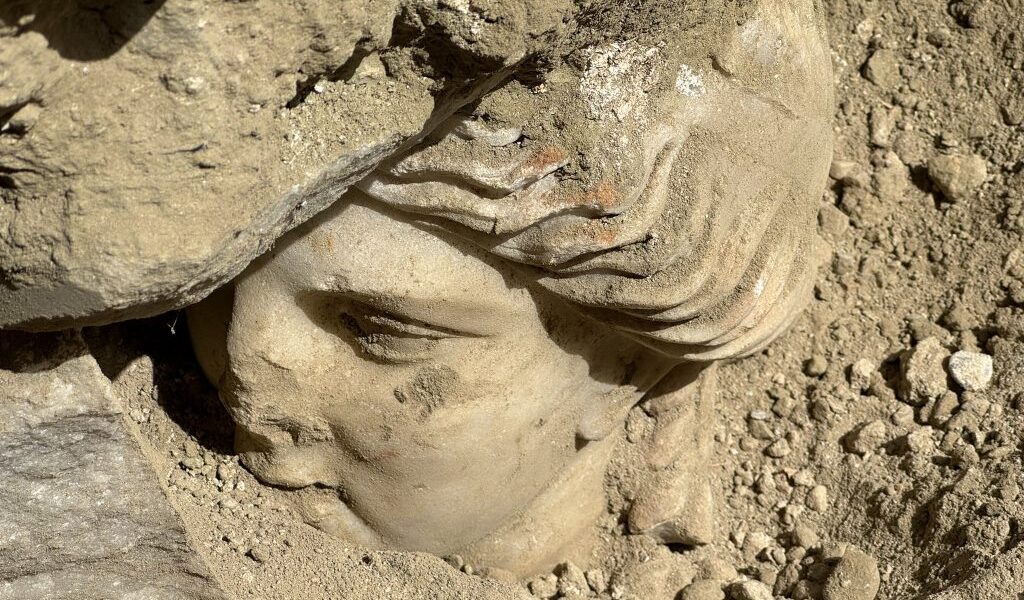The statue head of Hygieia, the Greek goddess of health, was found lodged between two rocks in Laodikeia.
A 2,100-year-old statue head of Hygieia, the Health Goddess, was discovered during excavations in the ancient city of Laodikeia in Pamukkale, Denizli, southwestern Turkey.

Laodikeia is located on the south side of the Lycus River, 6 km north of Denizli. It was the most famous and influential city in the 1st century B.C., with its remains dating back to this era.
The city was referred to as "Laodikeia on the edge of the Lycus" in ancient sources. According to other ancient sources, it was founded by Antiochus II between 263 and 261 BC and named after his wife. The Romans designated the city as the centre of Kybira's conventions (Golhisar-Horzum) due to its geographical location.
Laodikeia on the Lycus (Greek: Λαοδίκεια πρὸς τοῦ Λύκου Laodikeia pros tou Lykou; Latin: Laodicea ad Lycum, also transliterated as Laodiceia or Laodikeia) (modern Turkish: Laodikeia) was a prosperous ancient city in Asia Minor, situated in what is now Turkey, on the river Lycus (Çürüksu). It was located in the Hellenistic regions of Caria and Lydia.
Laodikeia boasts the largest stadium in Anatolia, two theatres, four baths, five agoras, five fountains (nymphaeums), long colonnaded streets, impressive temples, and numerous churches and basilicas.
Earthquakes frequently struck the town, and in 494 AD, a massive quake severely damaged the city. Subsequent earthquakes between 602 and 610 and the growing threat from Arab raids eventually led to the city's abandonment.
Excavations in the ancient city of Laodikeia are supervised by Prof. Dr. Celal Şimşek of the Pamukkale University Archaeology Department.
Celal Şimşek shared the unveiling of the statue head after 2,100 years on his social media account with the note "The meeting of the Sun and Hygieia with us in Laodikeia after 2,100 years."
Hygieia, the ancient Greek goddess of health, lent her name to the philosophy of hygiene. She was a young goddess, the daughter and chief attendant to Asklepios, the god of medicine. Hygieia was responsible for cleanliness and promoting a long life through preventive medicine.
In classical sculpture, she was often depicted holding or feeding a large snake (the symbol of Asklepion medicine) in her arms. Statues of Hygieia were erected in all the major healing centres located in the temples of Asklepios. Her primary temples were in Epidaurus, Corinth, Cos, and Pergamon.
The Department of Excavations and Research shared photographs of the discovered statue head.
[Photo: Celal Şimşek] [Cover Photo: Prof. Dr. Celal Şimşek]

